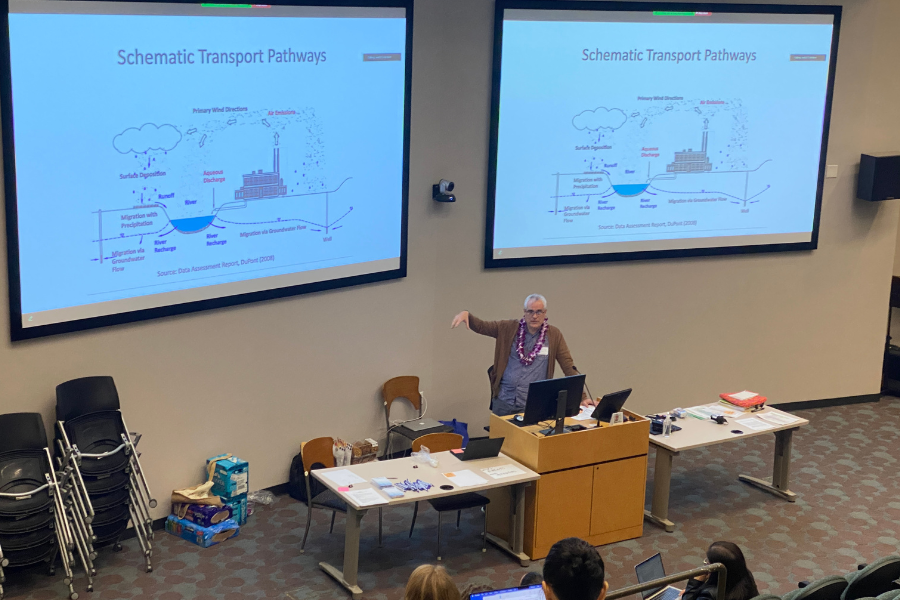
On November 20th, 2021, an estimated 27,000 gallons of Jet Propellant-5 (JP-5) were released from the Red Hill Bulk Fuel Storage Facility on Oʻahu, Hawaiʻi. Of these, a reported 5,542 gallons of jet fuel entered the Navy-managed drinking water system that supplies Joint Base Pearl Harbor Hickam (JBPHH) and neighboring communities, via the Red Hill Shaft which is just downhill from the fuel storage facility (Cavanaugh, 2022).
An estimated 90,000 individuals were exposed or placed at risk of exposure to fuel releases from the Red Hill storage facility. Many of those who drank, bathed in or used tainted water for dishes and laundry say they are still dealing with various health impacts. To track long-term health impacts, the University of Hawaiʻi, Office of Strategic Health Initiatives, is launching the Red Hill Independent Health Registry to obtain information about the health effects of exposure to jet fuel, and provide support and resources for anyone directly impacted by the water crisis.
“JABSOM is working closely with our partners at the Thompson School of Social Work and Public Health, the Water Resources Research Center at Mānoa, the University Health Partners of Hawaiʻi, and experts from across the country to develop ways to help learn about the impacts of the Red Hill exposure,” said Dr. Lee Buenconsejo-Lum, Associate Dean for Academic Affairs at the University of Hawaiʻi John A. Burns School of Medicine.
Last week, JABSOM hosted the registry’s first Scientific Oversight Workshop Meeting, which was led by the Thompson School Registry Hub. The two-day meeting gathered a group of local and national experts in public health, exposure science, and environmental science to discuss, review, and modify some of the tools that will be used to better understand the impact of the jet fuel spill.
“Our team at the Thompson School leads and coordinates the Registry’s Scientific Oversight Working Group. From the start of the project, we have recognized the benefits of convening an interdisciplinary group of international experts to support our efforts to design and implement the Red Hill Registry and to track the health outcomes of Registry participants over time. With the support and perspectives of local and global experts, we are confident that we are providing the highest quality technical advice, protocols and tools needed to launch the Registry” said Dr. Catherine Pirkle, Professor of Public Health and Scientific Director of the Red Hill Independent Registry.
While the Department of Defense ordered the defueling and permanent closure of the RHBFSF, the Department of Defense’s largest underground fuel storage facility, long-lasting health impacts from the spill might be felt for decades to come. Many of those affected by the jet fuel spill are military families who have moved from Hawaiʻi in the last four years, which will require connecting with those who are located around the globe. As Principal Investigator of the Pacific Regional Cancer Registry program since 2009, Dr. Buenconsejo-Lum has experience connecting from afar.
“There’s a lot of nuance in setting up a registry and communicating its purpose,” Buenconsejo-Lum said. “Understanding and buy-in is critically important as the Red Hill Registry launches. I was able to share a little bit of what we had to go through with all of our U.S. Pacific partners to get the cancer registries established and what it took to become a trusted source of information.
The Red Hill Registry is set to launch formal enrollment in mid-2025. To pre-register, please visit this link.